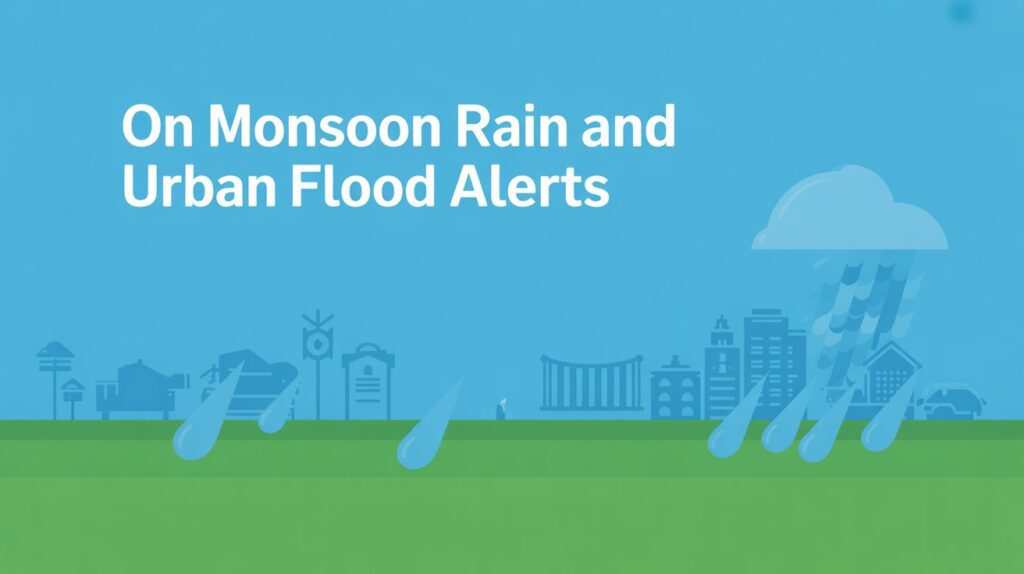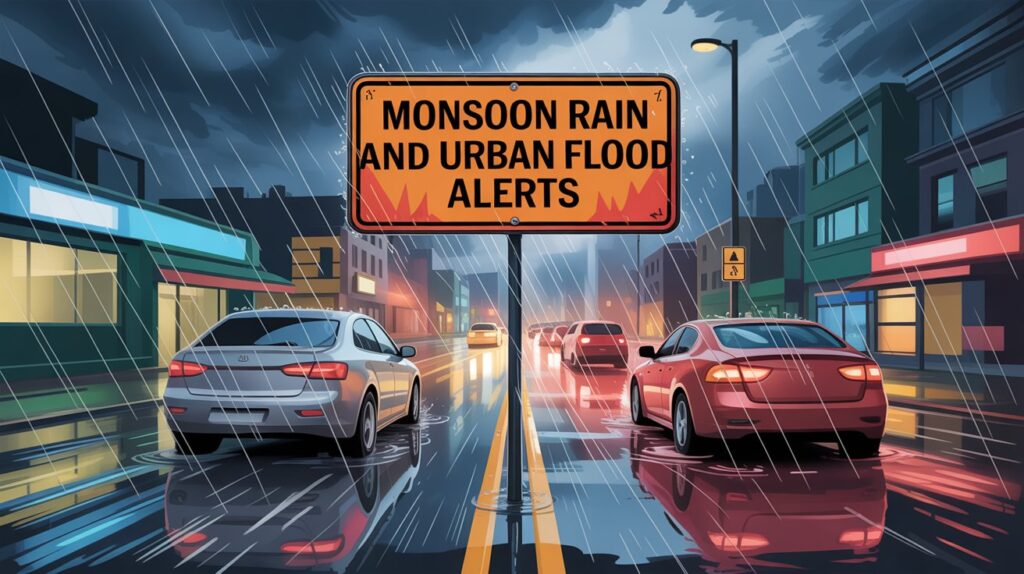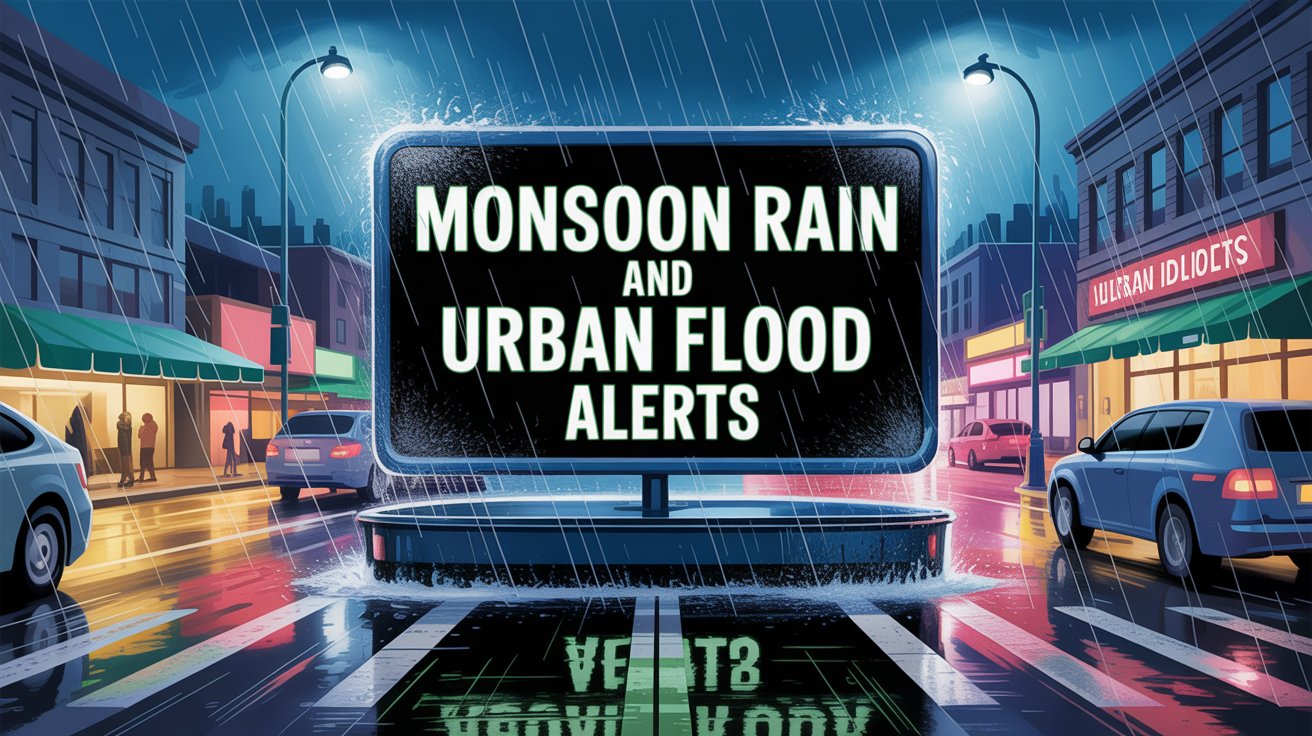Monsoon Rain and Urban Flood Alertst You Need to Know About Monsoon Rain and Urban Flood Alerts and How to Stay Safe
Several cities are now on urban flood alert because of nonstop heavy rains as the monsoon season becomes worse across South Asia. Authorities are warning people in cities, especially those that are low-lying and have a lot of people living there, about the potential of flash flooding, traffic jams, power outages, and damage to infrastructure. They say that the rain is likely to continue for the next few days.
Why the rains of the monsoon cause flooding in cities
The monsoon rains are very important for farming and providing water, but they also often cause a lot of flooding in cities, especially those that aren’t well planned or don’t have enough drainage. The monsoon this year has already caused flooding in big cities including Karachi, Lahore, Mumbai, and Dhaka. Here’s a list of what’s going on, why it matters, and how to keep safe.
When there is too much rain and the city’s infrastructure can’t soak it up or drain it quickly, urban flooding happens. Most of the time, this is because of
Stormwater drains that are blocked
Not throwing out trash correctly
Unplanned growth of cities
Not taking care of sewer systems well
Because of climate change, weather patterns are getting worse. Rainfall is now heavier in shorter periods of time, which overwhelms drainage systems that were never meant to handle that much water. Because of this, roads turn into rivers, basements fill with water, and transportation comes to a halt.

Most at Risk Areas
The latest news from meteorological departments and disaster management authorities says that the following locations are very likely to flood in cities:
Karachi, Hyderabad, and Lahore are in southern and eastern Pakistan.
Mumbai, Pune, and Ahmedabad are in western India.
Dhaka and Chittagong in Bangladesh
Effect on Daily Life
Nepal and Sri Lanka: cities in hilly terrain that are at risk of landslides
Tidal surges and river overflow make cities situated on riverbanks or near beaches even more dangerous. The warning levels have gone up, and disaster response teams are already preparing to go.
Monsoon floods mess up practically every part of city life:
Transportation: Roads are flooded, public transportation is stopped, and planes are late.
Electricity and Communication: It’s normal for power and phone lines to go down because of flooded infrastructure.
Health: Waterborne diseases including cholera, dengue, and typhoid spread when water is dirty.
Economy: Local economies are impacted by businesses closing, property being damaged, and supply lines being delayed.
Schools are often closed, people can work from home, and emergency shelters are set up for people who have to leave their homes.
The government’s response and safety measures
Both national and municipal administrations have issued flood warnings and are doing the following:
Putting drainage pumps in places where there is a lot of water
Unclogging sewage lines
Using weather radar devices to keep an eye on rainfall data
Emergency phone lines set up for people
Rescue teams with boats and emergency supplies
Officials are also telling people not to travel unless they have to, especially during the worst rain.
Safety Tips for People Who Live Here
If you live in a region that is prone to flooding, you should take these safety steps:
Stay up to date: You can get weather warnings on TV, the radio, or your phone.
Stay away from regions that are flooded. Don’t walk or drive through standing water; it can be deeper and more dangerous than it looks.
Get ready an emergency kit: Include important prescriptions, bottled water, a flashlight, and dry food.
Turn off electrical systems: If water gets into your home, turn off the main switches to avoid getting shocked.

Keep vital papers in containers that won’t get wet.
You should also teach kids and old people about the dangers of floodwater, like open manholes, electrical hazards, and infections that spread through water.
Long-Term Ways to Stop Flooding in Cities
Experts say that the only way to lower the long-term risk of flooding in cities is through sustainable urban design. Suggestions include:
Improving the drainage system
Setting up systems to collect rainwater
Adding more green space and surfaces that let water through
Smart city planning that includes flood zones and designs that are sensitive to water
To make cities that can handle floods, people need to work together, be aware of the problem, and grow responsibly.
Last Thoughts
Monsoon rain is a normal and important component of the climatic cycle, but too much development and bad planning have made it a regular calamity in cities. Many of the risks of urban flooding can be reduced with early warnings and the right safety measures. As the monsoon season goes on, keep aware, stay educated, and stay safe.
Put your mind on Monsoon Rain Urban Flood Alert is the main term.
Flood warning, rainfall alert, heavy rains, flash floods, urban flooding, and flood warning are all synonyms for the same thing.




